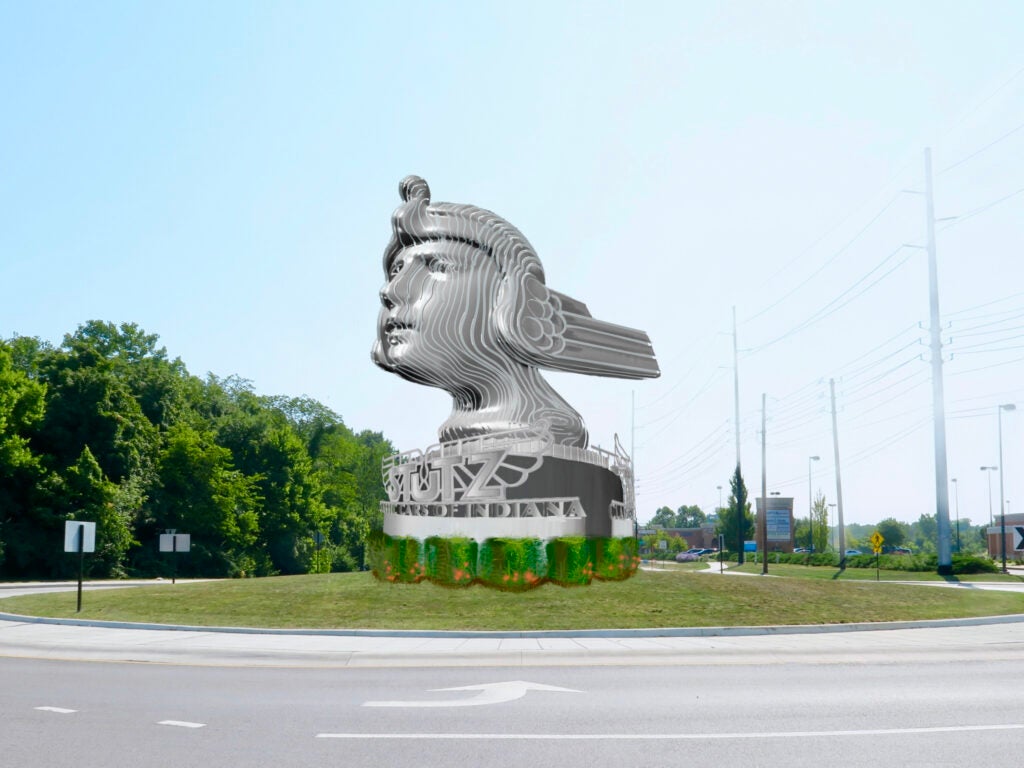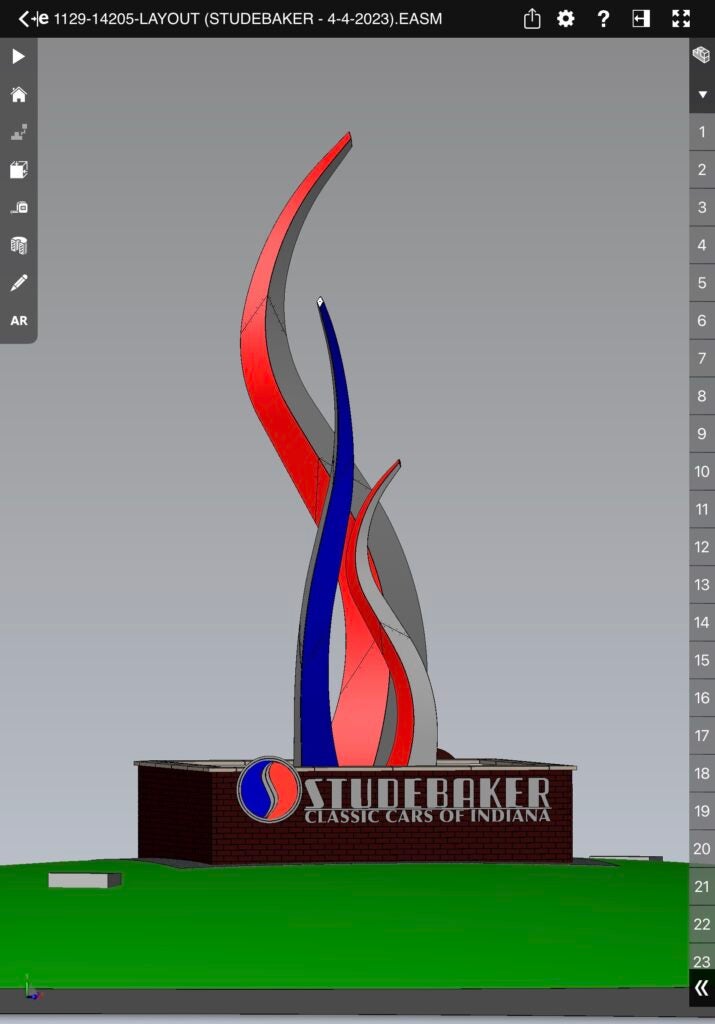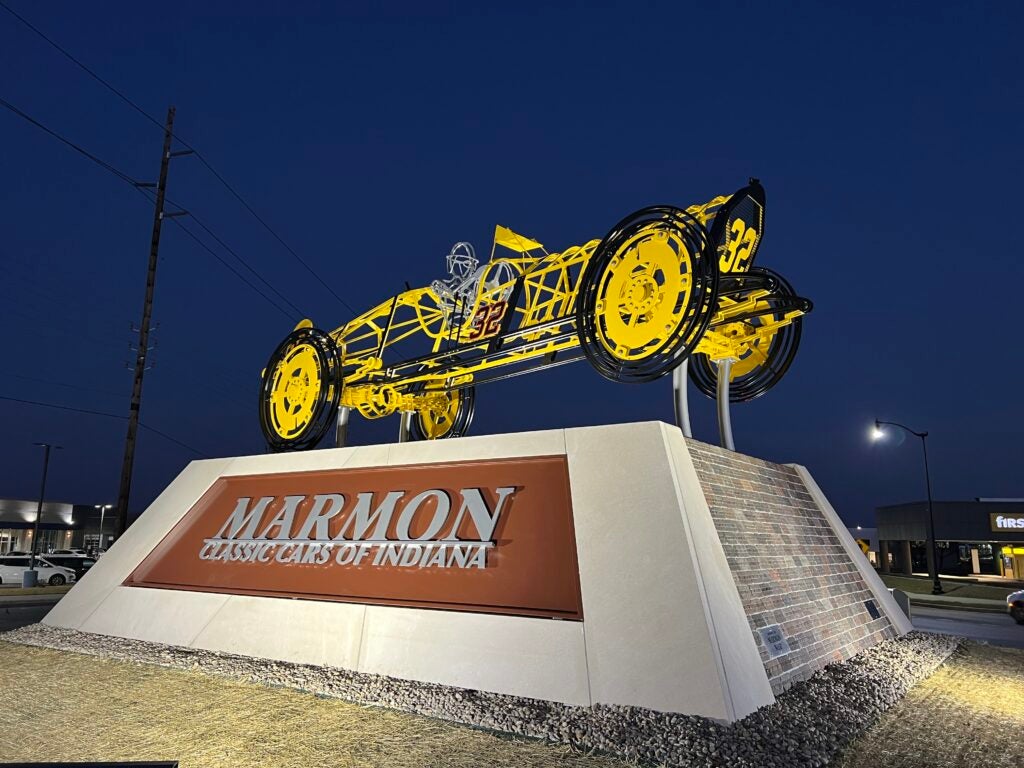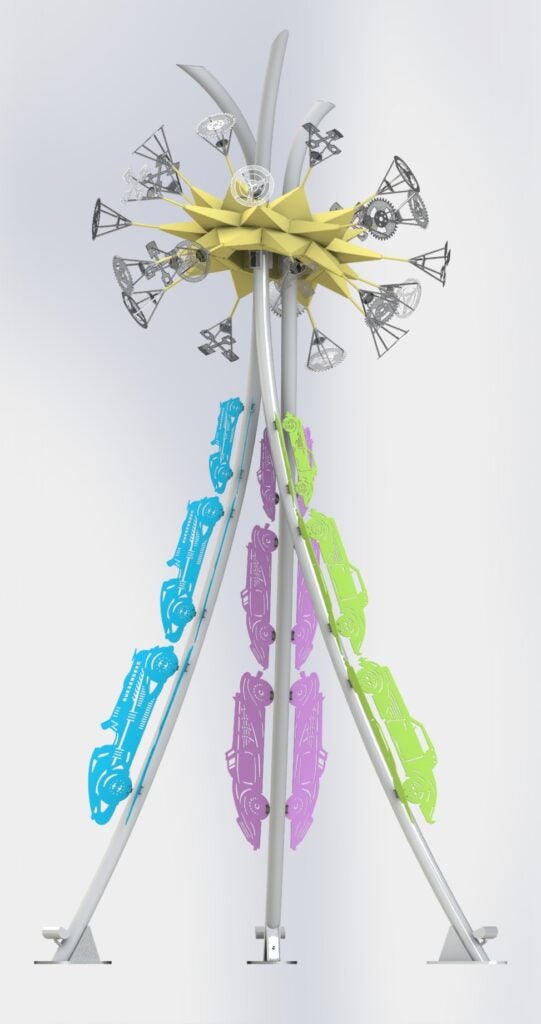Honoring Indiana’s classic car history with new art installations in Carmel
CARMEL, Ind. (WISH) — The heart and history of motorsports live in Indiana, and a new series of sculptures going up in Carmel is paying homage to that.
Four sculptures will appear on 96th Street, all depicting classic cars developed in Indiana. The first to be installed is on Priority Way. It is an artistic rendering of the first winner of the Indy 500, the Marmon Wasp.
Arlon Bayliss designed the four art pieces. The Auburn, Cord, and Duesenberg sculpture will be on Delegates Way; the Stutz installation on Gray Road; and the Studebaker sculpture on Hazel Dell Parkway.
“One of the most exciting things about the project is there’s a lot of ingenuity and invention and creative spirit which I think still exists in Indiana,” Bayliss said. “But it was really fun to see that in the early 1900s and to see what an incredible contribution these cars made to the world of automobiles.”
Bayliss is an English-born artist. He has created public art for over 30 years, and says it was important to memorialize the history of automotive design in Indiana with this set of art, as at one point, there were over 100 different car makers in Indiana.
When considering the history, he told News 8, “I had to think about the potential for that, and what I realized was there were a lot of inventions that were safety-related or engineering related that came about. For example, front-wheel drive was invented by Indiana car makers, and this car here, the Marmon Wasp, was the first car to use a rearview mirror.”
Robert Buchanan owns ‘bo-mar Industries,’ the fabricator for this project. As a lifelong Indiana resident and car enthusiast, he jumped at this opportunity.
“Exciting doesn’t even begin to cover it. It was just thrilling,” Buchanan said. “This car is the most iconic car in the history of racing. We couldn’t afford to make this less than what it really was as a real car.”
Each sculpture takes hundreds of hours to design and engineer and then two to three additional months to fabricate. “We bought large sheets of aluminum that were one inch thick and we have water jets and laser machines so we cut the product out on those two pieces of equipment,” Buchanan said.
Bayliss said he incorporates something for viewers to discover in every piece, this time he honored the first Indy 500 winner.
“I like to do an easter egg,” Bayliss said. “Something people can discover closely if they look at the artwork and in this case, we put the face of Ray Harroun into the mirror.”
The base of the Marmon sculpture incorporates even more 500 history, it has authentic bricks from the track that were made in 1901.
The next sculpture should be installed by the end of the summer with the final two completed by the end of the year.








(Provided Photos/Arlon Bayliss)